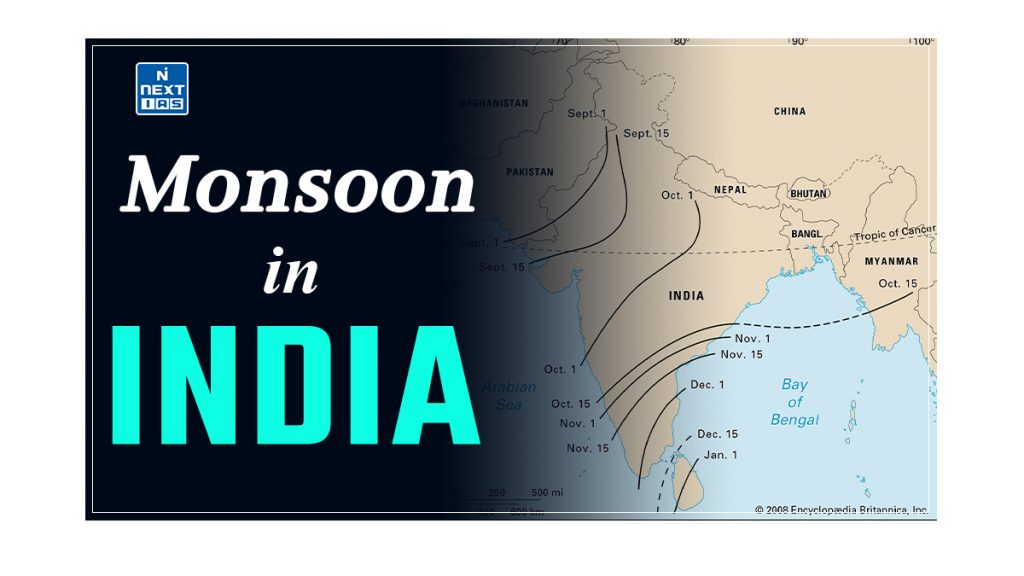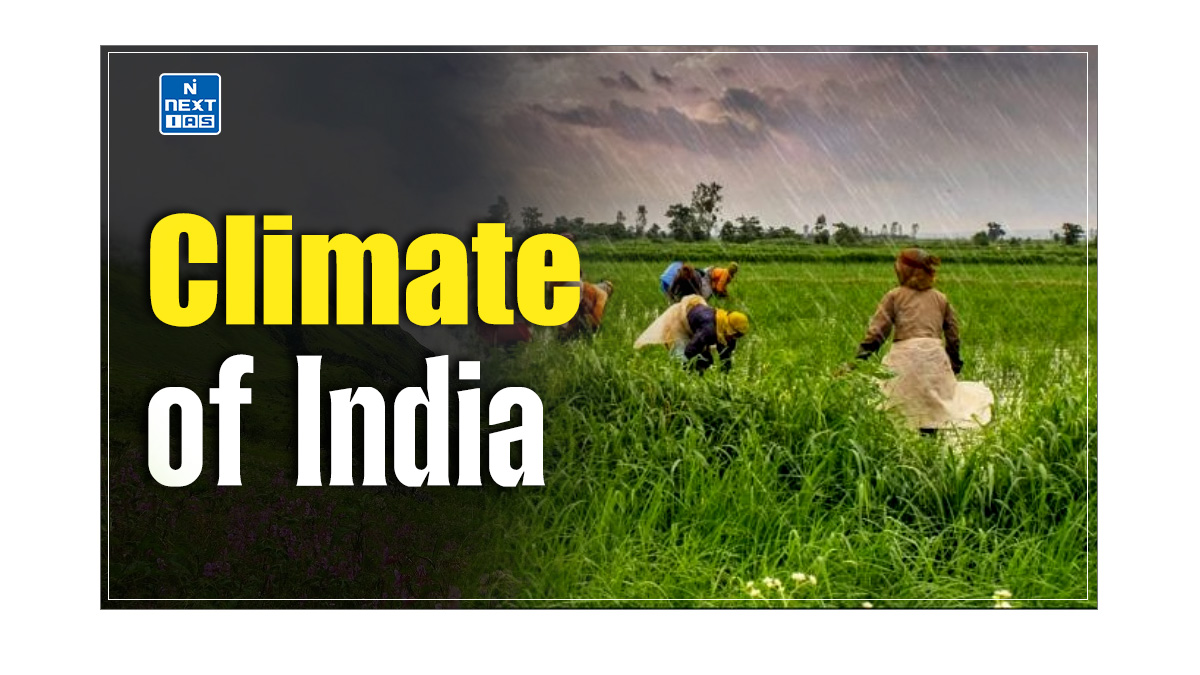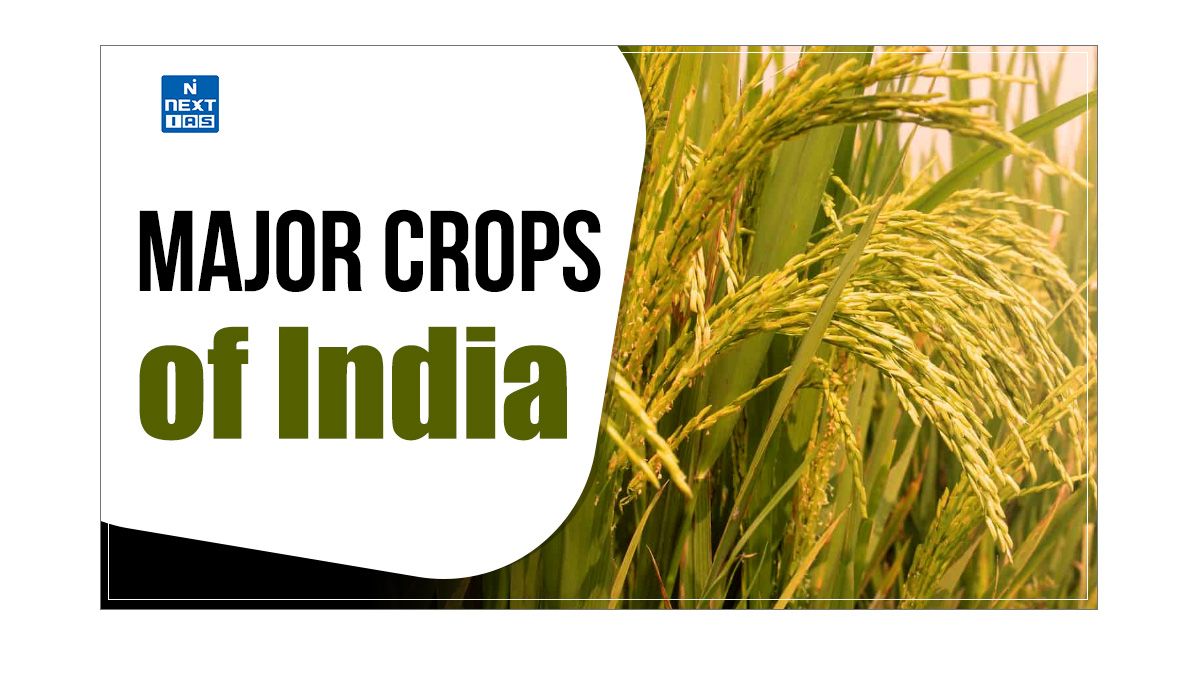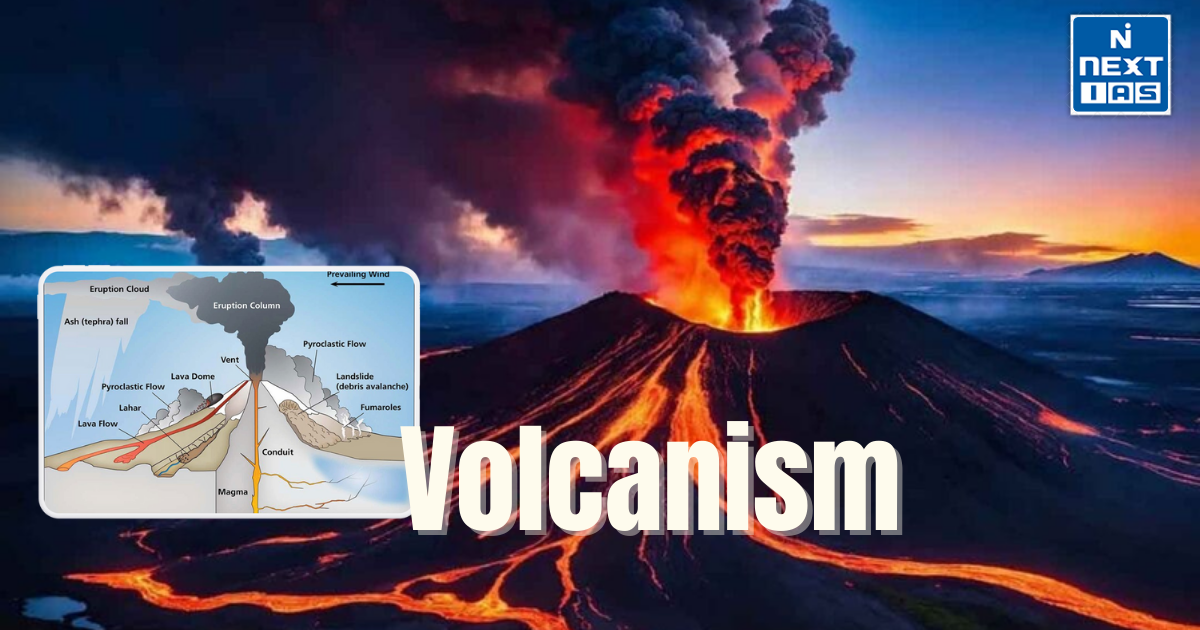
The Monsoon in India is a defining climatic phenomenon that profoundly impacts the subcontinent’s weather patterns, agriculture, and daily life. Originating from various atmospheric and geographical factors, the monsoon in India brings essential rainfall that sustains the region’s agriculture and replenishes water resources. This article aims to study in detail the characteristics, types, and impacts of the Indian monsoon, exploring its intricate mechanisms and regional variations that shape the country’s weather patterns and influence multiple sectors.
What is Monsoon?
- The word “monsoon” is derived from the Arabic word “mausim,” meaning “season.”
- The term “monsoon” refers to a seasonal wind pattern characterised by significant changes in wind direction and associated precipitation.
About Monsoon in India
- The Indian Monsoon is a critical climatic phenomenon characterised by seasonal wind shifts that bring heavy rains to the Indian subcontinent.
- The Southwest Monsoon typically begins in June, bringing moisture-laden winds from the Indian Ocean, and continues until September.
- The Northeast Monsoon, occurring from October to December, affects southeastern India.
Features of Monsoon in India
Some key features of the Monsoon in India are:
- Seasonal Rainfall – The Monsoon in India is characterised by heavy rainfall, primarily between June and September.
- Two Main Phases – It consists of the Southwest Monsoon (June to September) and the Northeast Monsoon (October to December).
- Geographical Influence – The monsoon in India is influenced by the Himalayas, the Thar Desert, and the Indian Ocean, which affect wind patterns and rainfall distribution.
- Diversity in Rainfall – Different regions receive varying amounts of rainfall, with coastal areas and the Western Ghats experiencing heavy precipitation, while some interior regions may receive less.
- Monsoon Winds – The monsoon winds are characterised by a shift in wind direction, bringing moisture-laden winds from the southwest.
Types of Monsoon in India
There are mainly two types of Monsoon in India:
- South-West Monsoon
- North-East Monsoon
Each of them has been discussed in detail in the following section.
South-West Monsoon in India
- The southwest monsoon in India extends from June to mid-September. During the hot summers, the Thar desert and adjoining areas of the northern and central Indian subcontinent heat up considerably.
- This causes low pressure over the north and central Indian subcontinent.
- The sudden onset of monsoons is an important feature of southwest monsoons.
- With the onset of monsoons, the temperature falls drastically, and the humidity level rises.
- It is a rainy season for most parts of India. Hence, this season is also known as the Hot-Wet Season.
Read our detailed article on South West Monsoon in India.
North-East Monsoon in India
- During October and November, the sun’s movement towards the south shifts monsoon troughs or low-pressure systems towards the south.
- It results in the weakening of the trough over the Northern Plains.
- Also, the withdrawal of southwest monsoon winds results in the development of a high-pressure system over that area, i.e., cold winds that swipe down from the Himalayas and Indo-Gangetic Plains towards the vast Indian Ocean.
- By the beginning of October, monsoons had withdrawn from the Northern Plains.
Read our detailed article on North East or Retreating Monsoon in India.
Factors Affecting Monsoon in India
The monsoon climate arises from the shifting patterns of pressure and wind belts. Indian monsoon has its origin, and its mechanisms are related to the following factors:
- ITCZ (Inter-Tropical Convergence Zone)
- Tibetan Plateau
- Jet Streams
- Somali Jet
Each of them has been discussed in detail in the following section.
Inter-Tropical Convergence Zone (ITCZ)
- The Inter-Tropical Convergence Zone (ITCZ), also called the Equatorial convergence zone, is a low-pressure belt of converging trade winds and rising air that encircles the Earth near the Equator.
- The ITCZ shifts north and south seasonally with the Sun. Over the Indian Ocean, it undergoes especially large seasonal shifts of 40°–45° of latitude.
- In June, the ITCZ moves polewards towards the Tropic of Cancer. However, it extends North over India (as far as 30° N) northwards of the Himalayan Mountains.
- This is due to the intense heating of the land mass that takes place over India.
- This intense heating and the movement of the ITCZ create low pressure over northern India.
- Meanwhile, the Indian Ocean heats up slowly, creating a zone of relatively high pressure (a subtropical anticyclone) off India’s southern coastline.
- Also, the winds blow from High to Low pressure. Air moves south-westerly from the sea to India in the north and northeast.
- Here, it is deflected towards the right by the Coriolis force as the Earth spins.
- This low pressure draws in warm, unstable air from the Indian Ocean, laden with water vapour, bringing heavy rain to India.
- The uplift of this air over the foothills of the Himalayas and intense convection of the landmass further increase rainfall.
- In January, the ITCZ and the subtropical jet stream move southwards over the Equator and towards the Tropic of Capricorn.
- At the same time, the continental landmass at the centre of Asia around Mongolia and the Himalayas experiences intense cooling as the Northern Hemisphere points away from the Sun.
- The intense cooling creates an area of high pressure in northern India, and the low pressure of the ITCZ is found to the south of India.
- The winds blow from the Northeast, away from the high-pressure cell over northern India, bringing dry conditions to most of the Indian subcontinent as they travel over land.
Tibetan Plateau
- The Tibetan Plateau affects the monsoon in two ways:
- As a mechanical barrier, and
- As a high-level heat source.
- The Tibetan Plateau, along with the Himalayas, is an enormous block of highland that acts as a formidable barrier and a heat source.
- In summer, Tibet’s air is 2°C to 3°C warmer than the air over the adjoining regions, hence the heat source.
- As a mechanical barrier, it causes the advancement of the Subtropical westerly jet stream to the south of the Himalayas, bifurcating it into two parts—one branch in the north of the Himalayas and the other in the south of it by November.
- As a high-level heat source, the Tibet Plateau gives birth to a temporary jet called the Tropical Easterly Jet, which originates from the Tibet Plateau and travels over the Indian subcontinent and Indian Ocean.
Jet Stream
- Jet streams are narrow, strong wind bands that generally blow from west to east across the globe.
- They are found at heights ranging from 11 to 13 km above the surface of the Earth.
- In the Northern Hemisphere, the mean position of the jet stream ranges from 20°N to 50°N latitude, while the polar jet stream is found between 30° and 70°N latitude.
- These streams are driven by substantial temperature differences between adjacent air masses.
- There are four major jet streams, which, despite being discontinuous at times, circulate the globe at middle and polar latitudes in both hemispheres.
- Rather than moving in a straight path, the jet stream exhibits a wavelike flow.
Read our detailed article on Jet Streams.
Somali Jet
- Apart from polar and subtropical jet streams, which are permanent jet streams, there are some temporary jet streams.
- Temporary jet streams are narrow winds with speeds of more than 94 kph in the upper, middle, and sometimes lower troposphere.
- Two important ones are the Somali Jet and the African Easterly Jet or Tropical Easterly Jet, which play an essential role in the formation and progression of Indian Monsoons.
- The Somalian current changes its flow direction due to upwelling and downwelling on the eastern coast of Africa.
- In winter, the Somali Jet flows from north to south, travelling from the coast of Arabia to the East African coastline.
- However, with the onset of the summer monsoon, this current reverses direction, moving from south to north.
- The progression of the southwest monsoon toward India is significantly facilitated by the Somali Jet, which crosses Kenya, Somalia, and the Sahel.
- This jet reinforces the high-pressure system near Madagascar and enhances the intensity and pace of the southwest monsoons reaching India.
Regional Variations of Monsoon in India
Various regional variations in the monsoon across different parts of India include:
Western Ghats and Coastal Areas
- This region experiences heavy monsoon rainfall due to orographic lift, where moist winds from the Arabian Sea are forced to rise over the Western Ghats, causing intense rain on the windward side.
Northern Plains
- The Northern Plains receive moderate to heavy rainfall, with the monsoon arriving from the southwest. The region is influenced by the Indian monsoon’s northward progression and the Himalayan foothills.
Northeast India
- The Northeast, including states like Assam and Meghalaya, receives very high rainfall due to its proximity to the Bay of Bengal and the influence of the Himalayan foothills.
Deccan Plateau
- The Deccan Plateau receives less rainfall compared to the Western Ghats and coastal areas. The monsoon winds weaken as they cross the plateau, resulting in lower precipitation.
Arid and Semi-Arid Regions
- Regions like Rajasthan and parts of Gujarat receive minimal rainfall, with the monsoon rains being sporadic and insufficient to replenish water sources fully.
Impact of Monsoon in India
The Monsoon in India has significant impact on various sectors:
- Agriculture – The Monsoon in India is vital for crop production in India. It provides the necessary water for planting and growing crops such as rice, wheat, and pulses.
- A good monsoon in India ensures abundant harvests, while a poor monsoon can lead to drought and crop failures.
- Water Resources – Monsoon rains replenish rivers, lakes, and reservoirs, crucial for drinking water, irrigation, and hydroelectric power generation.
- Adequate rainfall helps in maintaining the balance of water resources across the country.
- Economy – The performance of the monsoon season influences the overall economy, particularly in rural areas.
- It affects food prices, agricultural incomes, and rural employment. Good monsoon conditions can boost economic growth, while adverse conditions can strain economic resources.
- Health – The monsoon season can impact public health, with increased risks of waterborne diseases, such as cholera and dengue fever, due to stagnant water and poor sanitation.
- Proper management of water and sanitation is essential to mitigate health risks.
- Infrastructure – Heavy rains can lead to flooding, which impacts infrastructure such as roads, bridges, and buildings.
- Effective drainage systems and infrastructure maintenance are crucial to minimise damage and disruptions caused by monsoon rains.
- Environment – The monsoon season maintains ecological balance by supporting diverse ecosystems, replenishing soil moisture, and sustaining plant and animal life.
- However, extreme weather events can also cause environmental degradation and habitat loss.
Monsoon Prediction and Management
- Weather Forecasting – Advances in meteorology enable accurate monsoon onset, intensity, and duration predictions, which are crucial for planning and preparedness.
- Technology and Methods – Utilizing satellite imagery, radar systems, and climate models enhances the accuracy of weather forecasts and monitoring of monsoon patterns.
- Government Initiatives – Various government programs and agencies work to improve monsoon forecasting, flood management, and disaster response to mitigate the impact of adverse weather conditions.
- Policies and Schemes – Implementing policies and schemes to improve water management, agricultural practices, and infrastructure development helps address the challenges of monsoon variability.
- Adaptation Strategies – Developing and implementing adaptation strategies, such as rainwater harvesting and resilient agricultural practices, assists communities in coping with the effects of the monsoon.
- Agricultural and Urban Planning – Effective planning for agriculture and urban development, including improved drainage systems and crop management, is essential to mitigate the impact of monsoon-related disruptions.
Conclusion
The Monsoon in India is a crucial climatic system influencing the subcontinent’s weather, agriculture, and economy. Its distinct phases, regional variations, and effects on various sectors underscore its importance and complexity. As climate change and environmental challenges impact monsoon patterns, effective prediction, management, and adaptation strategies become increasingly vital. Sustainable practices and advancements in weather forecasting will be essential to mitigate the adverse effects and ensure that the monsoon continues to support India’s ecological balance and economic stability.
Frequently Asked Questions (FAQs)
What causes the Monsoon Season?
The monsoon season is caused by the differential heating of the Indian subcontinent and the surrounding oceans, creating a low-pressure area over the land and drawing in moist air from the oceans, leading to heavy rainfall.
What is Indian monsoon?
The Indian monsoon is a seasonal wind system that brings heavy rainfall to the Indian subcontinent, primarily from June to September, driven by the differential heating of land and sea.
Where does monsoon start in India?
The monsoon starts in India in the state of Kerala, typically around the beginning of June.
Why monsoon is important in India?
The monsoon is important in India because it provides essential rainfall for agriculture, the main livelihood for a large portion of the population. It also replenishes water resources and supports the country’s ecosystem and biodiversity.






